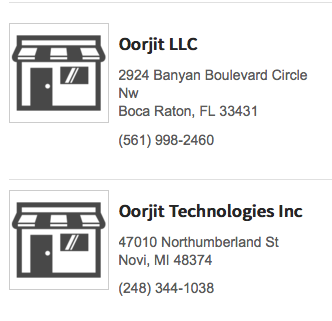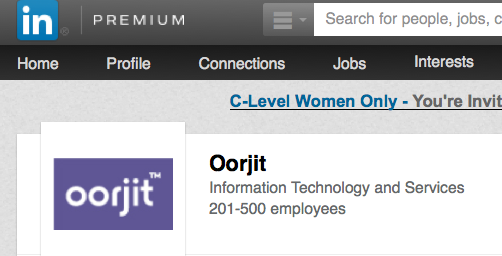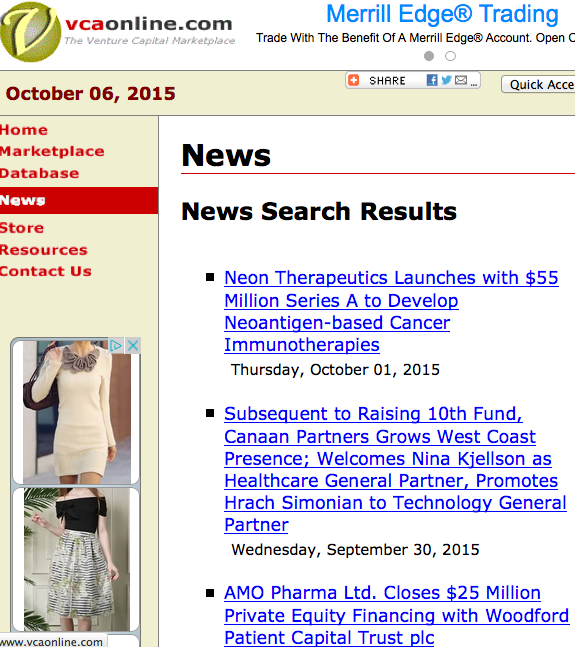There’s nothing more exciting than getting a client nibble. It doesn’t matter where it came from, in that thrilling moment when you open their email or hear them on the phone.
Excitement! Visions of dollar signs dance in your head.
That is, until the moment you ask the client what they pay, and they say, “I don’t know — I was hoping you’d tell me your rates, or put together a bid.”
Gulp. Then you end up second-guessing yourself, bidding super-low, and wondering if you left money on the table.
And you probably did.
If you’re at a loss when you have to name your price, let me acquaint with you my toolbox for sleuthing out appropriate rates, and getting information about a prospect. Whether it’s a magazine or a business, there are ways of getting a sense of whether they’re a $10 million company, they’ve only got 5,000 subscribers, or have just three employees.
You can do this fairly quickly — and it shouldn’t cost a dime. I don’t usually spend more than 10 minutes researching a prospect, using free resources, before I have a clear sense of whether I think they will pay pro rates.
Here’s my list of research tools for getting company details – and landing better freelance writing gigs:
1. Read the company’s website
No need to go on a big research hunt if you can find a press release on your target’s website. They’ll often give up useful facts such as:
- how old the company is
- how many employees they have
- annual sales
- how many offices they have and where they are
You could also find news of mergers or acquisitions, funding secured, planned expansion, new-product introductions, or hiring initiatives — all of which mean they need to do marketing and may need a writer.
For instance, this sounds like a company that could pay pro rates:
While this startup scarf-maker doesn’t:
If the company didn’t give you their site, that’s a red flag. Good companies want you to check them out and learn about what they do before they meet. They’re not placing blind ads on Craigslist. But even if you don’t have a URL, there are many other ways to get a sense of a company’s size.
Bonus tip: If the website has an ‘Investors’ tab, it’s a publicly traded company — usually a good sign it’s decent-sized. You can also check the SEC’s Edgar site to search for public documents on those companies, which often include revenue figures.
2. Newswires
If you have a company name, you can head over to PR Newswire (a/k/a iReach) or PRWeb and see if they’ve ever put out a press release there. Even if they haven’t put one out lately, you may be able to find older news that gives you enough sense of their size to know they’re a good prospect.
3. Google News
Next, to detect whether articles have been written about the company, try searching on the company name on Google News. (This is different from a wide-open Google search — Google’s News tab only offers news releases and articles, and screens out blog posts and other miscellany.) The company may not be saying anything to the press now, but they may have blabbed about their annual sales or number of employees in an article in some obscure business or trade journal a year or three back.
3. Hoovers
Part of business-filings giant Dun & Bradstreet, Hoovers has a juicy company database they bill as the world’s largest — and you can usually get company revenue at the free level, as you see here:
4. Manta
This website is all about helping small businesses sleuth out other businesses they can land as clients. Manta’s business directory isn’t the most up-to-date resource in my experience, but if your company turns up there, it’s a sure sign they’re pretty substantial. Manta has paid levels, but you can get the bare bones free, as with this search I did this week, for a writer who said they couldn’t find anything on their prospect, Oorjit, which turns out to have two companies by that name:
5. LinkedIn company pages
If you’re still stumped, try looking for a company LinkedIn page — more and more business have them.
For instance, a quick LinkedIn search for Oorjit, the company I looked up on Manta, turns up a bare-bones LI page that reveals another, much larger firm by that name which certainly has marketing cash (and also reveals who might be able to introduce me to them via my Connections):
A quick check of headquarters could probably clarify which of the companies bearing this name is my writer friend’s prospect — and tell him whether they’ll pay chump change or top rates.
6. VCAOnline
Wondering if a company has gotten venture capital or angel investor funding? VCAOnline is the place to go. Their site is a little non-intuitive, but that link gets you straight to their news database search tab. They do have databases you have to buy, but you can ignore those and just do news searches, like this one for “biotech”:
7. ZoomInfo
This website goes around compiling information about companies and individuals off the Internet, 24/7. Isn’t that nice of them? ZoomInfo is sort of the poor man’s Lexis-Nexis (which costs beaucoup bucks these days). Do a quick, free search here, and you might find hiring announcements, past news articles on the company, and more.
They’ve gotten snootier about sharing their data, but you can do a free trial, no-credit-card-required. A quick look may well get you what you need.
8. Glassdoor
Do you get an oogy feeling about this company? You might want to do a search on employee-gossip site Glassdoor to see if people are hating on this company, or if salaries are low. If they don’t treat employees well, they’re probably not going to be paying freelancers great rates. A free trial gets you access to all their data.
9. Your writer network
Have you tried asking your writer friends if any of them have written for this company or publication? Sometimes you’ll really get an earful.
What, don’t have a writer network? Yes, I’d usually plug my Freelance Writers Den community of 1,400 members here…but this post is about free resources. So you might check LinkedIn Editors & Writers, or a local journalists or copywriters group — but ask around. Really. It’s a heartache-saver.
10. Media kits
Wondering how big circulation is for that magazine you’re querying? Look on their site for their media kit for advertisers. This will invariably brag about how many subscribers they have, or how many locations distribute their rag. AdSprouts has collected thousands of media kits you can check out.
11. Rate sources
While you’re researching your prospect, the other approach to take is to find out what going rates are for the type of writing proposed — say, a 5-page white paper, a 3-fold brochure, or a 1500-word article for a national magazine. I’ve put together a collection of rate survey resources and guides on rates for various freelance writing gigs here. And of course, there’s always my list of 140 websites that pay.
12. Google a key phrase
That phrase is “[company name] sucks.” This is another one to do if you’re getting a bad feeling in your gut that this prospect may not be totally legit.
You’ll be amazed at what may come up. Sometimes, you can find whole sites devoted to slagging on a company, even smaller ones, or at the very least angry blog posts from wronged past workers.
To sum up, there’s no need to fly blind on bidding your writing services. Do a little research work — seriously, this usually takes maybe 10 minutes — and find out how big and successful your prospect is. Then, you’ll know whether this client is unlikely to pay even $50 for a blog post, or whether they sign you for a $5,000 white paper without blinking.
I’m often asked — how big of a magazine or company should I aim for? My answer is: Whatever size you’re pitching now, go bigger. Pitch as big as you dare.

















